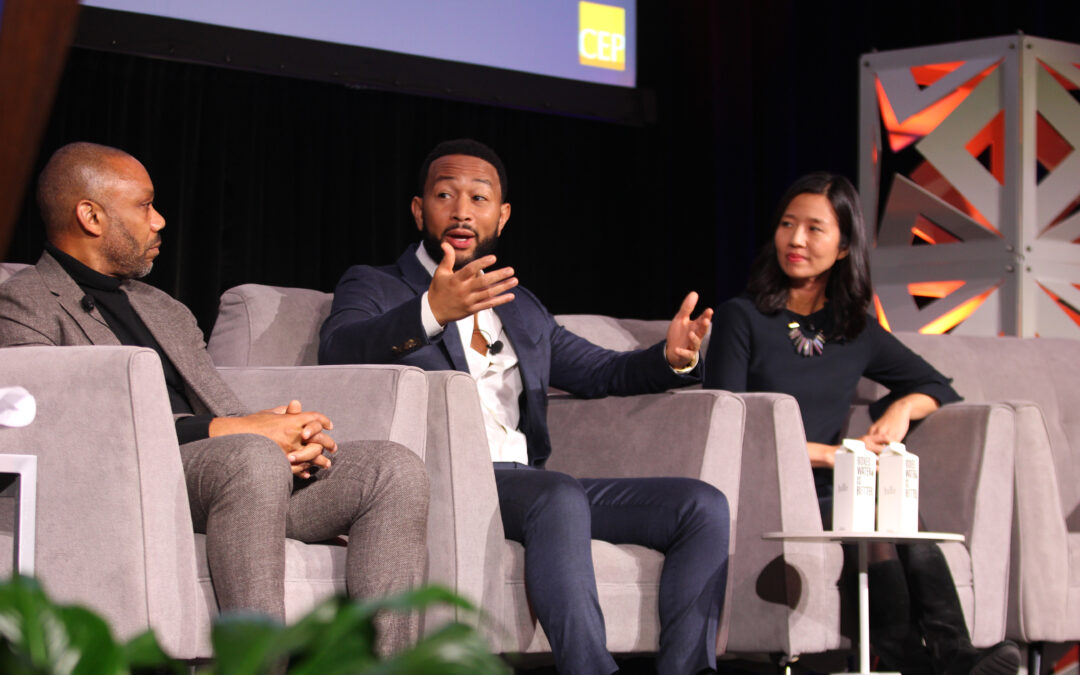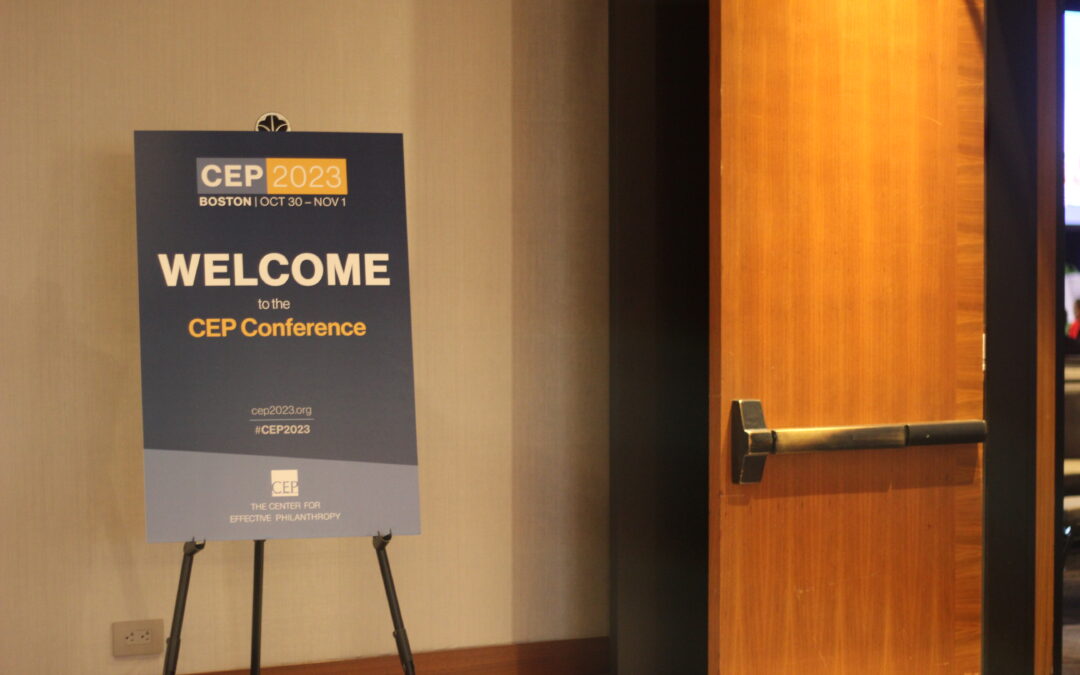What does it take to form strong relationships with grantees? What does it take to be responsive, fair, approachable when problems arise, and clear and consistent in communications – the core aspects of any effective funder-grantee relationship?
These are questions that have long been at the core of CEP’s work. Responses to CEP grantee surveys show a powerful association between strong funder-grantee relationships and more positive grantee perceptions about a foundation’s impact on their organizations, their fields, and the communities in which they work. Conversely, poor relationships can extract a real cost, potentially frustrating grantees and hindering their ability to achieve the very goals that foundations are supporting them to work toward.
In 2013, CEP published Working Well With Grantees: A Guide for Foundation Program Staff, a free guide that analyzed our Grantee Perception Report (GPR)® dataset and findings from previous CEP research to produce a set of principles and recommendations to help strengthen the ways in which foundation staff interact with their grantees. From that research, here are four steps funders can take to build strong relationships with their grantees:
1. Ensure that you understand grantees’ goals and strategies — and let grantees know that you do.
Strong funder-grantee relationships must first and foremost be rooted in a mutual understanding of what grantees are trying to accomplish. In our dataset of more than 50,000 grantee perceptions, the most powerful predictor of strong relationships is the extent to which a grantee feels their funder understands their organization’s goals and strategies. When we talk to program officers whose grantees provide particularly positive ratings about their relationships, they often highlight the importance of making this understanding a vital part of their work.
It’s important to try to learn more about where grantees might be coming from. Talk with grantees about where they are in the life cycle of their organization and ask a lot of questions. It’s also important to discuss where grantees fit into the foundation’s own goals and strategy. Foundation and grantee goals and strategies may not always perfectly align, but building a mutual understanding of goals is a key first step in building a strong, productive, and supportive relationship. And make sure you close the loop. Cultivating a strong understanding is one thing; helping your grantees see that depth of understanding is another.
2. Make the selection process helpful in strengthening grantees and mitigate pressure on grantees to modify their priorities to get foundation support.
The selection process is, of course, primarily for foundations to determine the organizations they want to support — but it’s also a crucial time for grantees to shape and reshape their relationships with their funders. It’s often the first time a funder and potential grantees meet, and — as in many interactions in our lives — first impressions matter.
Depending on the approaches a funder takes, these initial interactions can help grantees feel supported — or they can make grantees feel pressured to modify their priorities to receive funding. An unhelpful selection process can have negative repercussions on a funder’s relationship with its grantees before it has even gotten a chance to grow.
While there are elements of the selection process that cannot be changed, there are ways for foundation staff to be more helpful to grantees and applicants during the process. Consider gathering organizations together to share the foundation’s goals and discuss what you are looking for in proposals, as Chris Kabel, a highly rated program officer formerly at Northwest Health Foundation in Portland, reported doing through “grantee forums” the foundation holds for anyone interested in applying. Make yourself available and answer grantees’ questions promptly and clearly. Talk with your applicants to help them understand how they do, or do not, fit into your foundation’s goals and strategies. And be conscious of the inherent power dynamics at play in funder-grantee relationships; listen attentively and be mindful of whether or not a grantee might be compromising their goals and priorities to receive funding.
3. Make time to keep sharp in your understanding of the fields and communities in which your grantees work.
Relationships with grantees are stronger when grantees believe a funder has real expertise in the grantee’s area of work and is applying that know-how for the grantee’s benefit.
Grantees understand that program officers are in a unique position to access, develop, and communicate information about the communities and fields in which they work. They value the knowledge and expertise that foundation staff bring to the table, and they want to be able to create a dialogue with their funders about the substance of their work. But when grantees sense that foundation staff do not possess that important relevant knowledge, they often worry that opportunities for impact are being squandered.
How can a funder develop this strong level of understanding? One place to look is the perspective of the beneficiary — those that funders and their grantees are seeking to help through their work. For example, Cathy Cha, senior program officer at the Evelyn and Walter Haas, Jr. Fund, which focuses in part on immigrant rights and integration, meets in person once every quarter with someone who is facing firsthand the threat or emotional duress of deportation to better “get a sense of what life is like for them.”
You can also learn from grantees’ experiences through attending conferences or talking with grantees about what they learned during the grant reporting process. Or you can make efforts to stay current with research in grantees’ fields, collaborate with other funders to share information and co-develop strategies, or invest in professional development for staff. There are numerous ways for funders to build their expertise, and taking steps to strengthen the level of understanding of a grantee’s field or local community is important work.
4. Create the right balance and frequency of interactions with grantees.
Our data show that grantees find the frequency and balance of interactions with funders to be less important to their relationships than the aforementioned factors. But the quantity of interactions matters, too. Funders should communicate with grantees at least once a year. This may seem like a low bar, but nearly a quarter of grantees in our dataset report having contact with their funder only once a year or less, and grantees who report yearly or less frequent contact with their program officers tend to rate their relationships less positively.
Reciprocity is also important — our data show that program officers who initiate contact with grantees as frequently as grantees initiate contact with them, or who reach out to grantees more than grantees reach out to them, tend to have stronger relationships. Grantees who feel like they’re always the folks picking up the phone to reach out to the foundation have less positive experiences.
Grantees are sometimes unsure about how much interaction a funder is willing to have. It can be beneficial to talk with grantees about their level of availability so they better know what to expect. Tailor the amount of contact with each grantee so that it makes sense, and consider which grantees might benefit from more frequent communication and at what points in the relationship contact would be most helpful to both parties.
When it comes to relationship-building with grantees, there is often discussion about which types of communications work best. Should I make a site visit or a phone call? Or maybe just an email would suffice? These are important questions, but what matters most is that in whichever means of communication you pursue, the quality of those interactions — how well you understand grantees’ goals, strategies, and the fields and communities in which they work; how helpful you are in the selection process; and how frequently you are in contact with them — helps you build the strong and supportive relationships necessary to create impact.
You can download the guide in its entirety, and any of CEP’s research reports, for free on our website.
Ethan McCoy is writer – development and communications at CEP.


